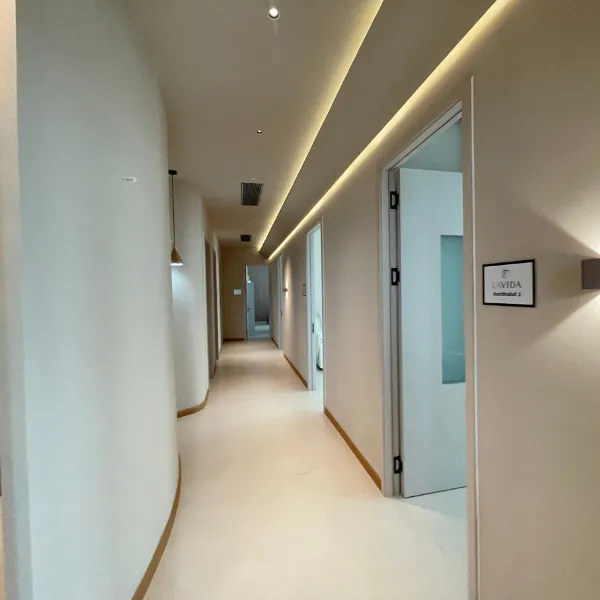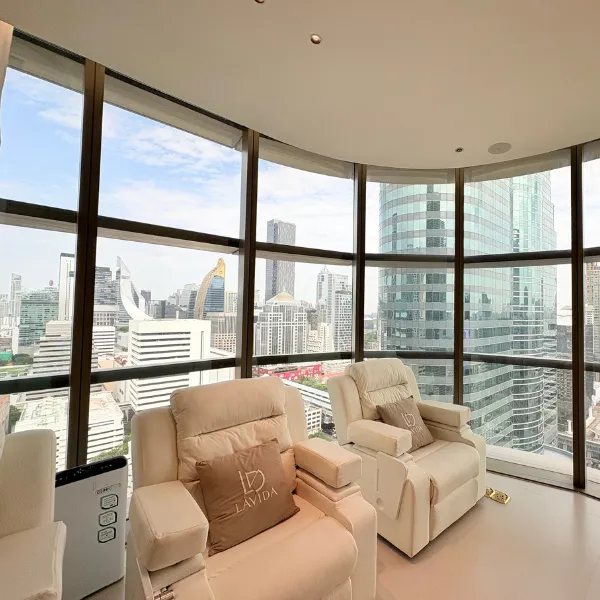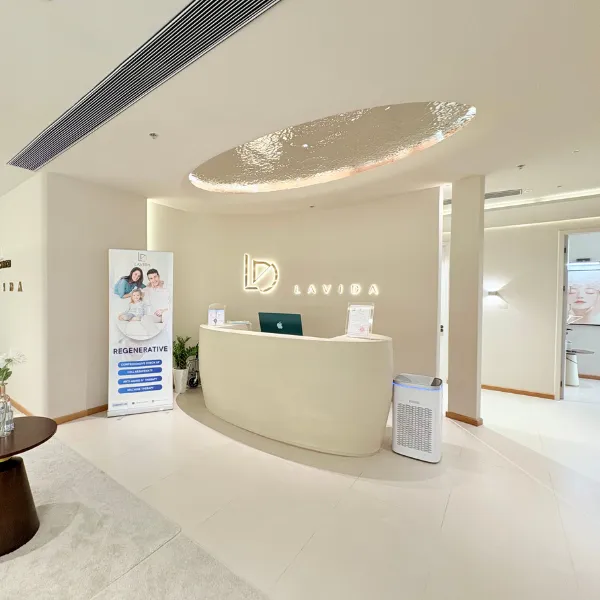Regenerative & Longevity
LAVIDA
We also guarantee that treatment plans are tailored to individual needs, with each step clearly explained to empower informed decision-making. Effective patient care and communication are key to successful treatment outcomes
Nestled in the bustling heart of Bangkok, Thailand, LaVida Clinic has emerged as a frontrunner in this technologically-led holistic approach to anti-aging.
Mobilizing Global Excellence to Pioneer Breakthroughs in Regenerative Medicine
We integrate the entire continuum of care—prevention, treatment, rehabilitation, and regeneration—with a focus on pioneering advancements in regenerative medicine, standardized clinical practices, and a fully digitalized operational framework. By leveraging a multidisciplinary team of medical experts and global investment resources, we are establishing a next-generation intelligent healthcare platform.
In collaboration with leading medical institutions across Germany, Switzerland, The United States, Japan, and Thailand, Lavida is actively driving the clinical translation and application of stem cell therapies, immunotherapies, and anti-aging innovations. Through international expert collaboration, global resource integration, and enhanced cross-border medical services, we are dedicated to delivering premium, personalized regenerative healthcare solutions to a global clientele.










LAVIDA Q&A
A: While the term “Anti-aging” is commonly used in both clinical and public discourse, it is frequently integrated with the concept of “Regenerative Medicine.” In essence, aging refers to the progressive decline in physiological function and cellular integrity that occurs naturally over time, whereas the prefix “anti-” denotes an interventionist approach aimed at mitigating or decelerating this decline.
It is important to recognize that completely halting the aging process is biologically unrealistic. Instead, the primary objective of anti-aging medicine is to delay the onset of age-related deterioration, thereby preserving functionality, vitality, and overall well-being for as long as possible.
In contrast, regenerative medicine emphasizes the restoration, repair, and rejuvenation of tissues and organ systems. It involves advanced therapeutic strategies that are designed to promote the body’s innate capacity to heal and regenerate.
When combined, anti-aging and regenerative medicine form an integrative and rapidly evolving medical discipline. The goal is to minimize cellular and molecular damage, enhance biological resilience, and optimize healthspan—not merely to extend lifespan, but to improve the quality of life as individuals age.
A: There are several fundamental distinctions between anti-aging medicine and conventional (modern) medicine. However, it’s important to begin by recognizing that each approach offers unique strengths. Rather than viewing them as competing modalities, a more effective strategy is to integrate both approaches to support optimal health and healing.
In many cases, anti-aging and conventional therapies can be used in parallel, particularly in the early phases of treatment. As the body begins to regain balance and vitality, patients may gradually reduce reliance on one modality and transition toward a health maintenance plan centered on sustainable lifestyle modifications.
A key difference lies in the treatment philosophy and therapeutic timeline. Conventional medicine, particularly in hospital based settings, is typically symptom-focused and fast-acting. For instance, a headache may be alleviated within hours with an analgesic, and infections are often managed promptly with antibiotics or symptomatic medications.
In contrast, anti-aging medicine emphasizes restoring the body’s innate healing and regenerative capacity, starting at the cellular level. It takes a longer-term approach, often requiring weeks or months for meaningful results to emerge, as the body gradually strengthens and re-establishes internal equilibrium. While the progress may be slower, the outcomes are typically more sustainable—supporting long-term vitality without continual pharmacological intervention.
In this context, integrating both conventional and anti-aging medicine allows for a more holistic, patient-centered approach. This combination not only addresses immediate health concerns but also fosters long-term resilience and wellness through preventive and regenerative strategies.
A: Anti-aging therapy is inherently not a one-size-fits-all solution. The variability in individual responses stems from a complex interplay of genetic predispositions, intrinsic biological factors, lifestyle choices, environmental exposures, and the distinct mechanisms of action associated with each therapeutic modality. This underscores the increasing significance of personalized medicine in the realm of geroscience, where interventions are strategically tailored to align with an individual’s unique biological profile, health status, and aging trajectory. Such a precision-based approach aims to optimize therapeutic efficacy while minimizing risks, paving the way for more targeted and meaningful outcomes in age-related health interventions.
A: The term “anti-aging” often leads to the misconception that such interventions are only necessary once visible signs of aging appear. Many individuals may assume, “I’ll consider anti-aging therapies when I’m older,” delaying preventive care until noticeable decline occurs.
However, when viewed through the lens of regenerative medicine—which emphasizes restoration, repair, and rejuvenation—it becomes evident that these principles can be beneficial at virtually any age. Regenerative care is not solely about reversing aging, but rather about supporting and enhancing the body’s innate ability to heal, recover, and maintain optimal function.
By proactively incorporating regenerative strategies earlier in life, individuals can strengthen biological resilience, reduce the risk of premature decline, and promote long-term vitality. In this context, the earlier one begins to invest in regenerative health, the greater the potential for sustained wellness and healthy aging.
A: When considering the duration of a regenerative health program and the time required to observe noticeable results, it is important to recognize that outcomes can vary significantly from person to person. Even individuals of the same age, gender, and clinical profile undergoing the same treatment protocol may respond differently. As such, there is no standardized timeline applicable to everyone.
Anti-aging and regenerative care must be personalized. Physicians must take into account several factors—including medical history, current health status, underlying conditions, and laboratory results—in order to determine the most appropriate therapeutic plan and estimate a realistic timeframe for results. For this reason, it is challenging to provide a definitive answer regarding how long it will take to achieve visible or measurable improvements.
In general, regenerative medicine is a process that requires time and consistency. Unlike conventional treatments that may provide rapid symptomatic relief, anti-aging therapies are designed to restore the body’s internal systems and enhance long term biological function.
Ultimately, the goal of anti-aging medicine is not only to improve how patients feel in the short term but to support lasting vitality, resilience, and healthspan. Patience, commitment, and individualized care are key to realizing meaningful and sustainable outcomes.
Discover Us




LAVIDA
21th Floor, Gaysorn Tower (Gaysorn Village), 127 Ratchadamri Rd, Lumphini, Pathum Wan, Bangkok 10330












